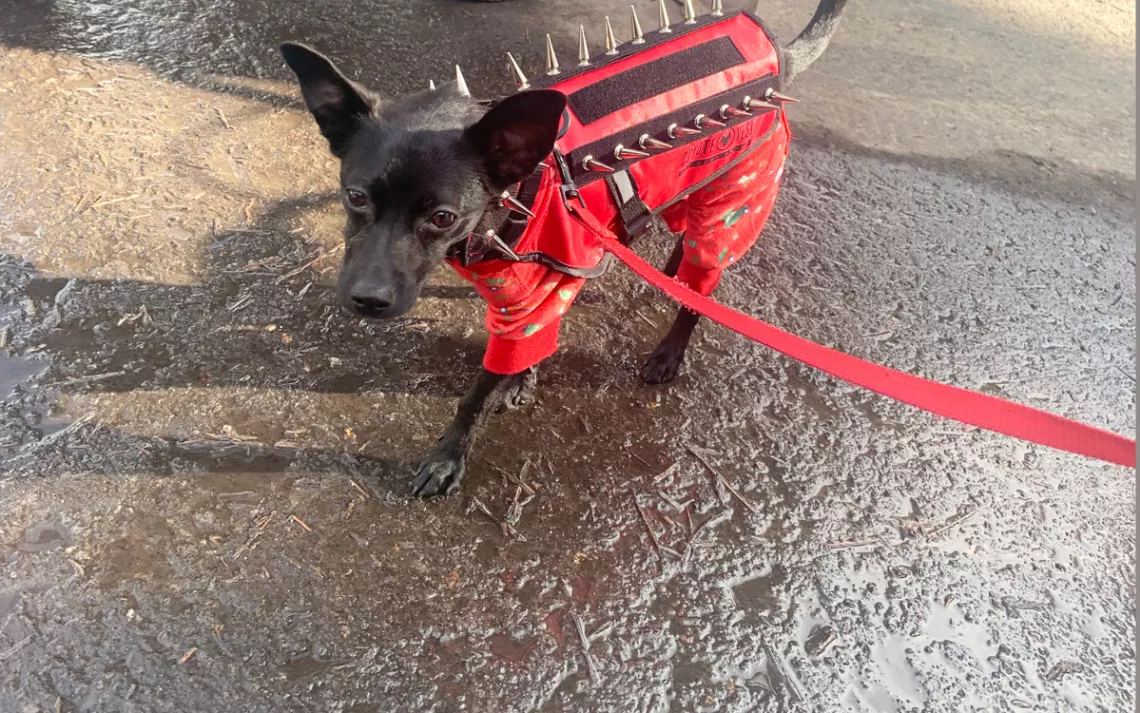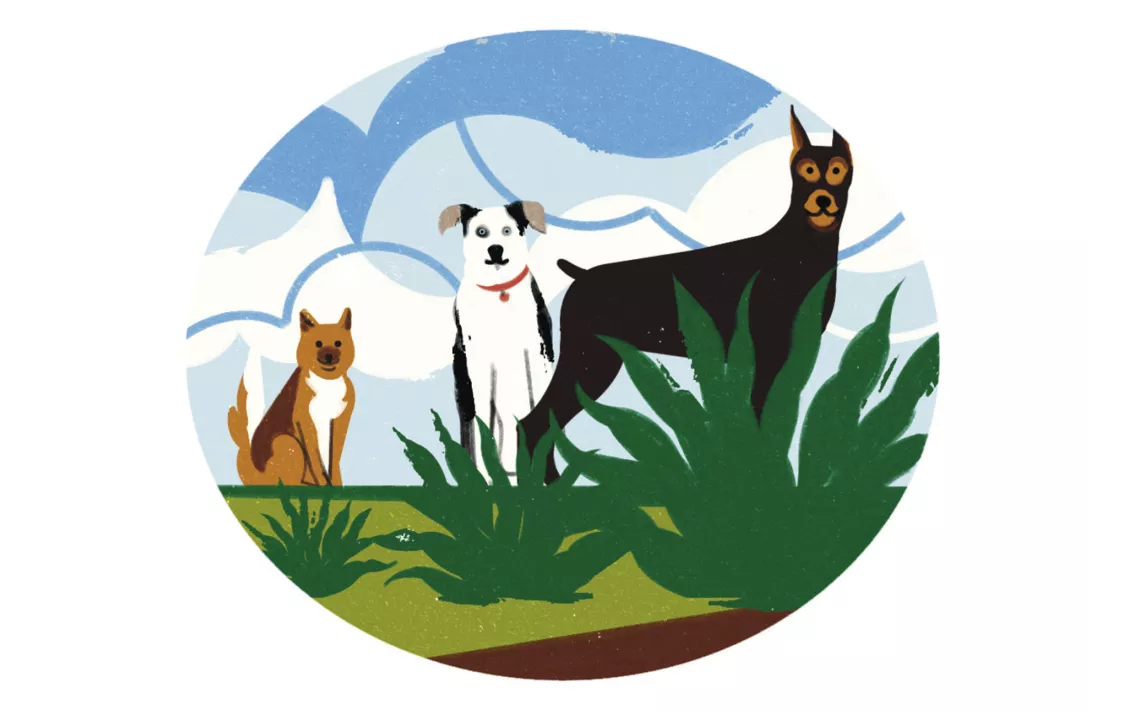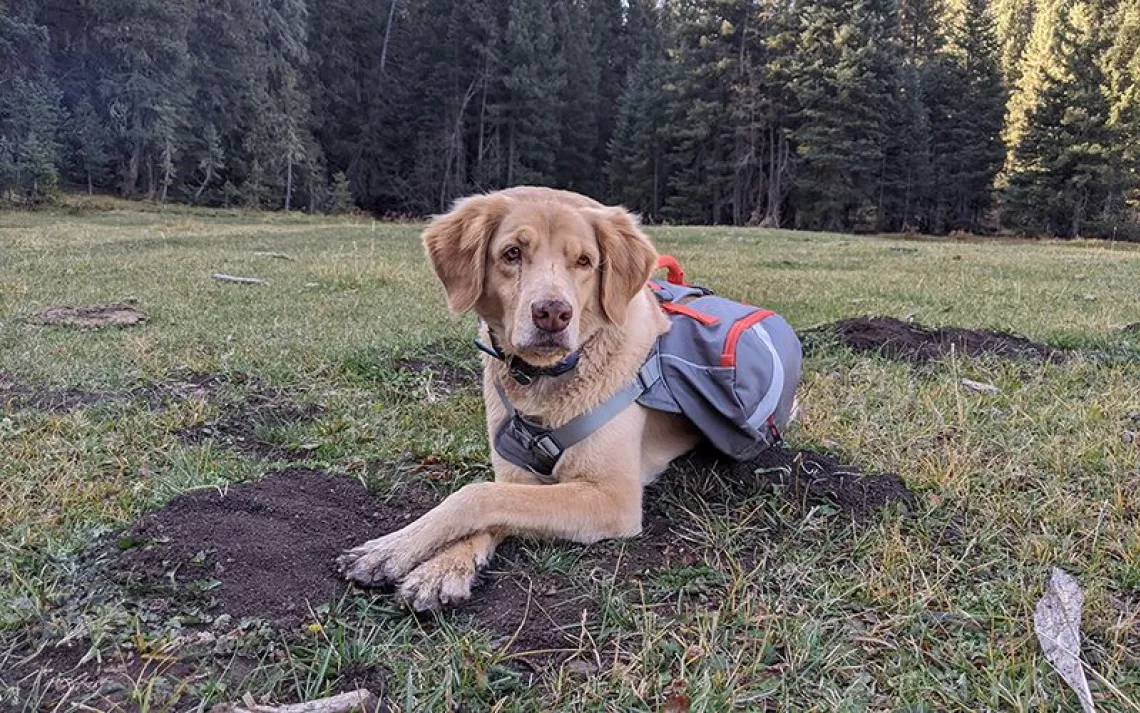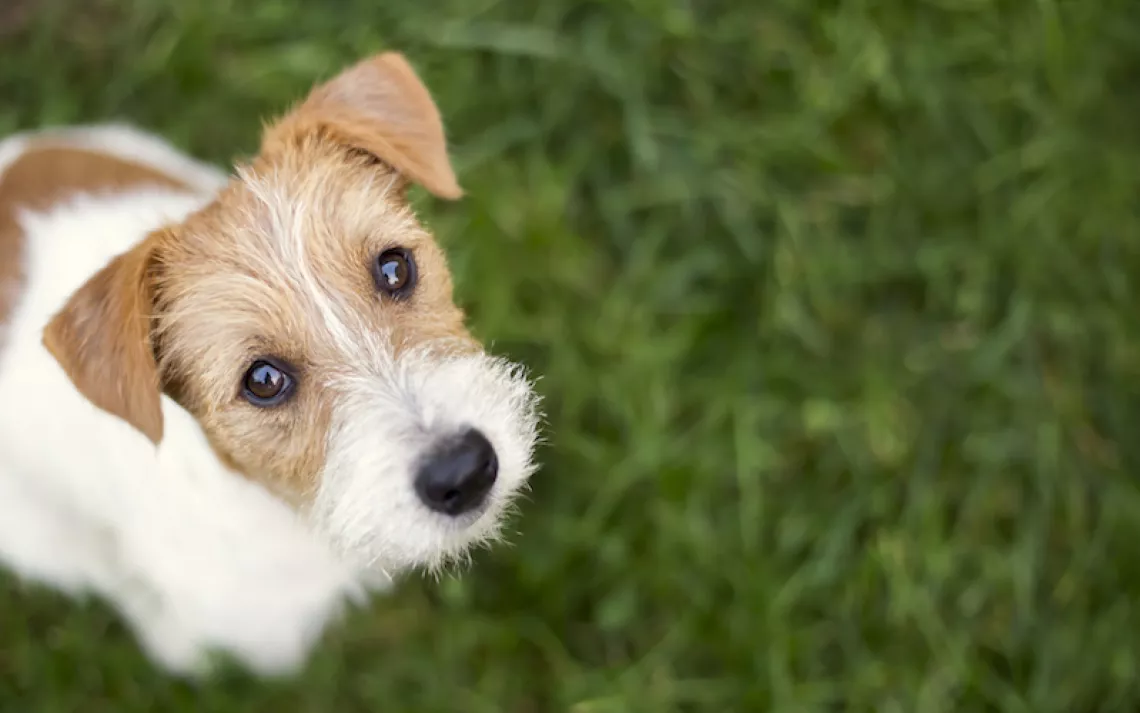The Tale of the Coyote-Proof Chihuahua Suit
TikTok told us to buy studded armor for our tiny dog

Poppyseed in her coyote jacket. | Photo by Kim Hew-Low
We called her Poppyseed for her mottled fur, which is black, and because when she came to live with us in Brooklyn, she weighed in at two pounds flat. We were told by the shelter that she had been found out in the wild, abandoned in a field in rural Texas, a fact that we recited to her whenever she resisted our attempts to coax her outside; to potty, we would carry her to her favorite patch of sidewalk grass, and she would walk only when she was convinced that we were heading home. We joked that she must have been the product of natural selection solely calibrated to domestic environments where the temperature was controlled, the predators were nonexistent, and the kibble was engineered to be easily digestible.
Perhaps my phone had heard this, and the fact that we were planning to visit my partner’s family in Lake Tahoe: Before our departure, TikTok delivered to me a clip of a Chihuahua in spike-studded armor. “Please beware,” went the audio, “if you have small dogs in California.” We were advised to purchase a coyote suit at $109.95 pretax. I showed the video to my partner, who joked that Poppyseed would make the perfect snack for a coyote. We thought about hawks and foxes. We looked up headlines on bobcat attacks. I had a grim premonition that we had bestowed upon Poppyseed a name that portended her edibility. She trembled when faced with a floating plastic bag; how did we expect her to fare out in nature?
Strapped on top of her fleece onesie, the coyote suit lent Poppyseed a certain punk-metal chic that at once calmed my anxiety and stoked my affection. Though my partner’s family in Tahoe found it absolutely ridiculous, and perhaps a reflection of our equally ridiculous choice to live in the city. To be fair, I could hardly imagine them living in Brooklyn, where life seemed to occur on a different scale: crammed into apartments with awkward angles and sardine-tin subway cars. They each stood at six feet, with huge hands and robust beards, and spent their days on the mountain, the lake, or the trail.
I thought about all this while walking Poppyseed in her coyote suit one evening in Tahoe, down an empty, snow-lined drive. After resisting both the change of scenery and the change of attire, she had progressed by the third day from petrification to a curious, if careful, trot. When she stopped to press her snout into a patch of exposed earth, I raised my face to the purpling sky, which was now framed by the silhouette of jagged pines. I took in a lungful of air, cold and resinous, then settled into the cavernous silence—a pocket of stillness shattered by a nearby rustle, from which I instinctively turned, scooped up Poppyseed, and ran.
Upon our return I expressed to my partner’s family what I thought was an unfortunate trade-off: The stars out here were so beautiful, I said, but I hated the idea that no one might hear you if you screamed. This elicited confused indignation, particularly from the cousin who had just returned from a monthslong solo stint backcountry skiing. The cousins were as baffling to me as they were enviable: I, too, wanted to feel so inseparable from nature that any indictment against it felt personal. Though I’d grown up in a city, I’d never thought of myself as chronically urban; in Sydney, Australia, you aren’t ever too far from the beach or the bush, and I’d even gone camping (in a tent!) through a high school program. But in these moments, I felt like a different species to these cousins altogether.
Nonetheless, I resolved for the remainder of the trip to be “into nature.” I rose with the sun. I consulted mountain maps. I attempted to ski. Whenever I found myself face-to-face with the snow, which was often, I tried to find something redeeming about the opportunity to encounter nature so closely. Yet all I found was that I newly identified with my Chihuahua in her coyote suit: I felt like a different creature intended for a different habitat, the kind with flowers that bloom year-round under the awnings of bodegas.
Back in Brooklyn, I stowed the coyote suit away and went out for groceries. As I closed the door of our apartment behind me, I saw Poppyseed curl into herself contentedly on the blanket-strewn couch. Outside, the air was warmer than I had anticipated, which made me realize that it hadn’t yet snowed all winter. The building across from ours had been vacated suddenly, due to a rat infestation—the front yard had been thoroughly burrowed into a choppy sea of soil. I put on my mask to enter the grocery store, where I discovered that egg prices were up, apparently because of avian flu.
It had been a strangely optimistic illusion to assume that the lives of the Tahoe cousins were embedded so thoroughly in nature while mine stood apart from it. To think that nature, even in the city, might be contained by boxes and fences and prepackaged arrangements for purchase seemed increasingly like a self-protective myth.
Later in bed, scrolling through Twitter, I saw a meteorologist confirm that New York City temperatures in January had been above average all 31 days of the month. Perhaps I had failed at my quest to be “into nature,” but that didn’t mean there was any way out of it. No matter where we lived, we were at home in nature. No matter what kind of creature we were, we were fundamentally inseparable from it.
 The Magazine of The Sierra Club
The Magazine of The Sierra Club



